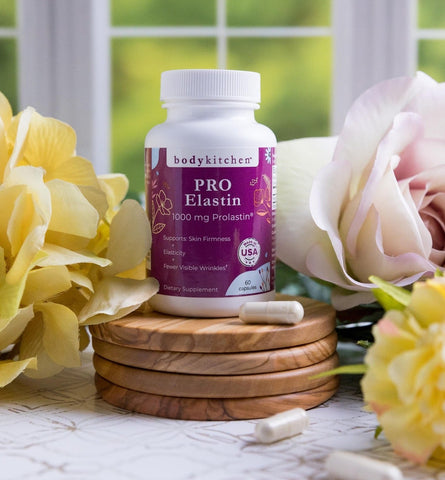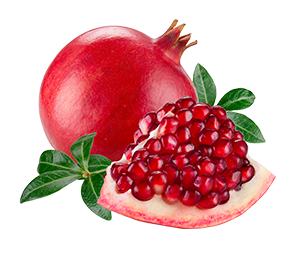Glycation and Advanced Glycation End Products (AGEs)
When it comes to looking after our skin, most people think of avoiding the sun or using the right skincare products. But did you know that reducing sugar can be just as helpful?
Through a process called glycation, excess sugar can attach to proteins such as collagen and elastin, forming a compound we call “advanced glycation end products,” or AGEs.1 These AGEs cause the skin to weaken and leads to wrinkles, sagging skin and a damaged skin barrier.
Knowing about AGEs and understanding how glycation works can help you protect your skin from every angle.
How Sugar Damages Your Skin from Inside Out
We know that sugar can wreak havoc on our waistline and cause or worsen conditions such as diabetes and heart disease, but now we know it can cause skin damage as well.
When advanced glycation end products bind to our elastin and collagen, they cannot function as they normally would. This can accelerate the breakdown of the skin and worsen not only its health but also appearance.2
Researchers have found that AGEs naturally increase as we get older, so some of this is unavoidable. But diets high in sugar and processed foods make the problem much worse. The bottom line is, excess sugar isn’t just bad for our health, it can also cause skin damage.
What are Advanced Glycation End Products
So, what is glycation, actually? Glycation is the chemical reaction that occurs when sugar molecules attach to proteins or fats. The result is what we call advanced glycation end products, which are sticky substances that mess with how our collagen and elastin work.1
Once formed, AGEs trigger oxidative stress and inflammation as the body tries to deal with these damaged proteins. This can cause skin damage and a damaged skin barrier.2
And while our bodies are normally pretty good at repairing damaged molecules, in the case of advanced glycation end products, it’s not that effective. The AGEs start to build up, which affects the structure and appearance of the skin.
This might explain why high-sugar diets and poorly controlled blood sugar can lead to premature aging, chronic disease, and glycation skin issues such as loss of firmness and increased sensitivity.3
Glycation Process and Skin Aging Connection
Collagen and elastin are the basic framework of healthy, firm skin. When glycation alters these proteins, they lose flexibility and strength.2 Imagine an elastic band that is thin and brittle – the proteins can no longer bounce back, leading to sagging, fine lines, and a dull appearance.
Studies show that AGEs reduce skin elasticity and prevent skin repair, ultimately leading to damaged skin barrier which then makes the skin less able to protect against UV, pollutants, and other harmful irritants.4 Glycation may also reduce antioxidant activity in the skin, further increasing skin damage over time.5
This is why topical skincare isn’t always enough. We have to look at this from an inside out approach. A healthy diet can help, but supplements can provide a protective boost as well.
Supplements like Body Kitchen’s Youthful Beauty Advanced Powder are targeted for this task. Containing ingredients that protect against glycation and promote collagen health, it can be a tool to fight back against the aging effects of sugar.
Foods that Accelerate Skin Glycation
Foods that spike blood sugar or are inflammatory in nature can increase glycation and accelerate skin damage. Here are some examples:6
- Refined sugars: Candy, soda, table sugar, syrups, etc
- Ultra processed foods: White breads, white pastas, instant noodles, frozen meals, etc
- Charred or fried foods: Foods cooked at very high heats can create AGEs directly
- High fat & sugar combos: Ice cream, pastries, doughnuts, ice cream, etc
Note that in the case of charred or fried foods, it’s not just the food itself that can be problematic but rather the cooking method. Cooking protein-rich foods at really high heat can cause glycation within the food itself. Try to avoid this.
Overall, by reducing these foods and being mindful with cooking methods, you can slow down glycation and reduce skin damage.
How to Prevent Sugar-Induced Skin Damage
The good news is that there are many ways to reduce glycation and prevent rapid skin damage. Consider these tips when it comes to your diet and lifestyle:
- Keep blood sugar balanced: Prioritize fiber-rich foods, protein and healthy fats. Avoid refined and processed carbohydrates and especially high sugar foods.
- Add more antioxidant-rich foods: Colorful fruits, veggies, legumes, spices and even teas provide powerful compounds that fight inflammation, reduce advanced glycation end products and prevent skin damage.
- Cook smart: Avoid frying or charring foods. Steaming, sautéing, poaching and blanching are better choices to avoid the production of advanced glycation end products.
- Consider key supplements: Nutrients and compounds like vitamin C, polyphenols, curcumin, resveratrol, omega 3’s and others have been found to reduce AGEs.7 And don’t forget Body Kitchen’s Youthful Advanced Powder, with its blend of skin-supportive nutrients, as another key resource for preventing skin damage.
Final Thoughts
While skin aging is a part of life, research shows us that diet and lifestyle can play a huge role in preventing skin damage and slowing the aging process. Glycation is a hidden but powerful driver of damaged skin, but reducing sugar and adding anti-inflammatory support can help.
By lowering sugar intake, packing in colorful anti-inflammatory foods and being smart about cooking methods -- as well as adding key supplements like Body Kitchen’s Youthful Advanced Powder -- your skin can have a fighting chance against glycation and stay firm, radiant and strong. Remember, our skin needs more than topical support. Protect your skin and fight aging at a cellular level.
References:
- https://pubmed.ncbi.nlm.nih.gov/35455991/
- https://pubmed.ncbi.nlm.nih.gov/36364850/
- https://pubmed.ncbi.nlm.nih.gov/37111220/
- https://pubmed.ncbi.nlm.nih.gov/35646963/
- https://pmc.ncbi.nlm.nih.gov/articles/PMC9655929/
- https://pubmed.ncbi.nlm.nih.gov/37547584/
- https://pubmed.ncbi.nlm.nih.gov/35636190/














